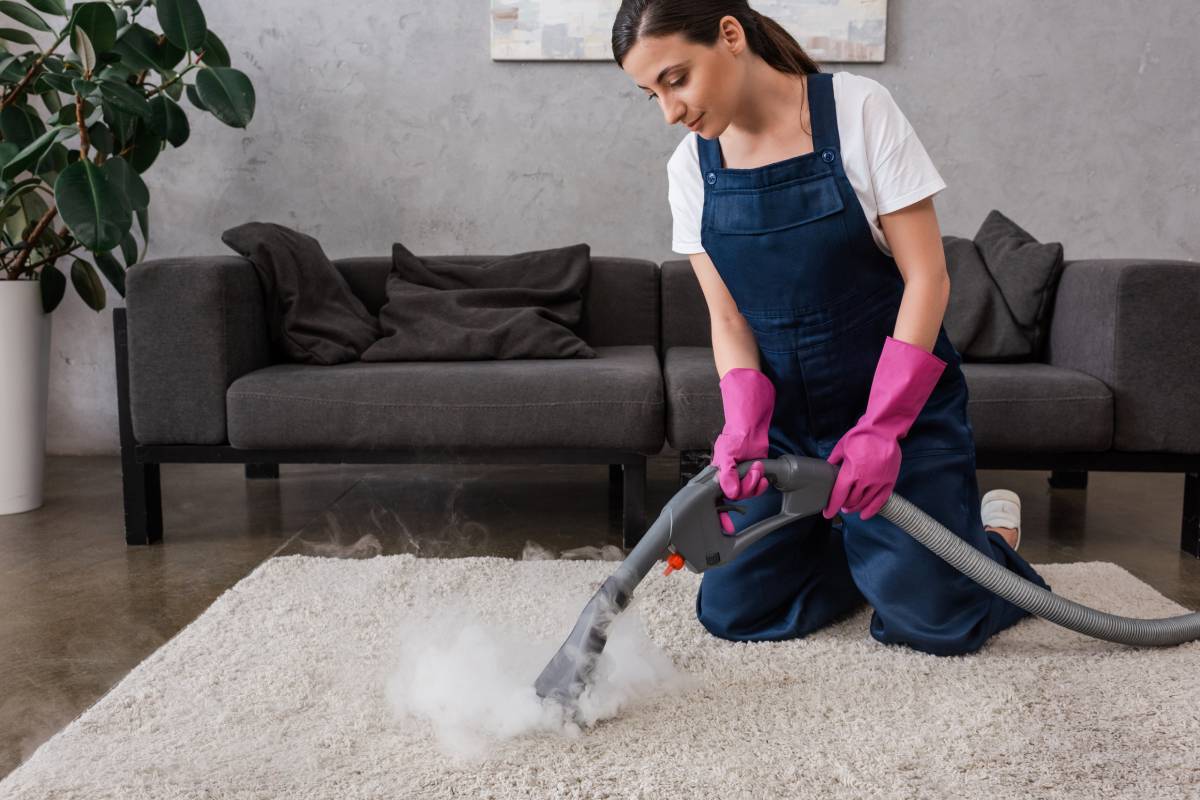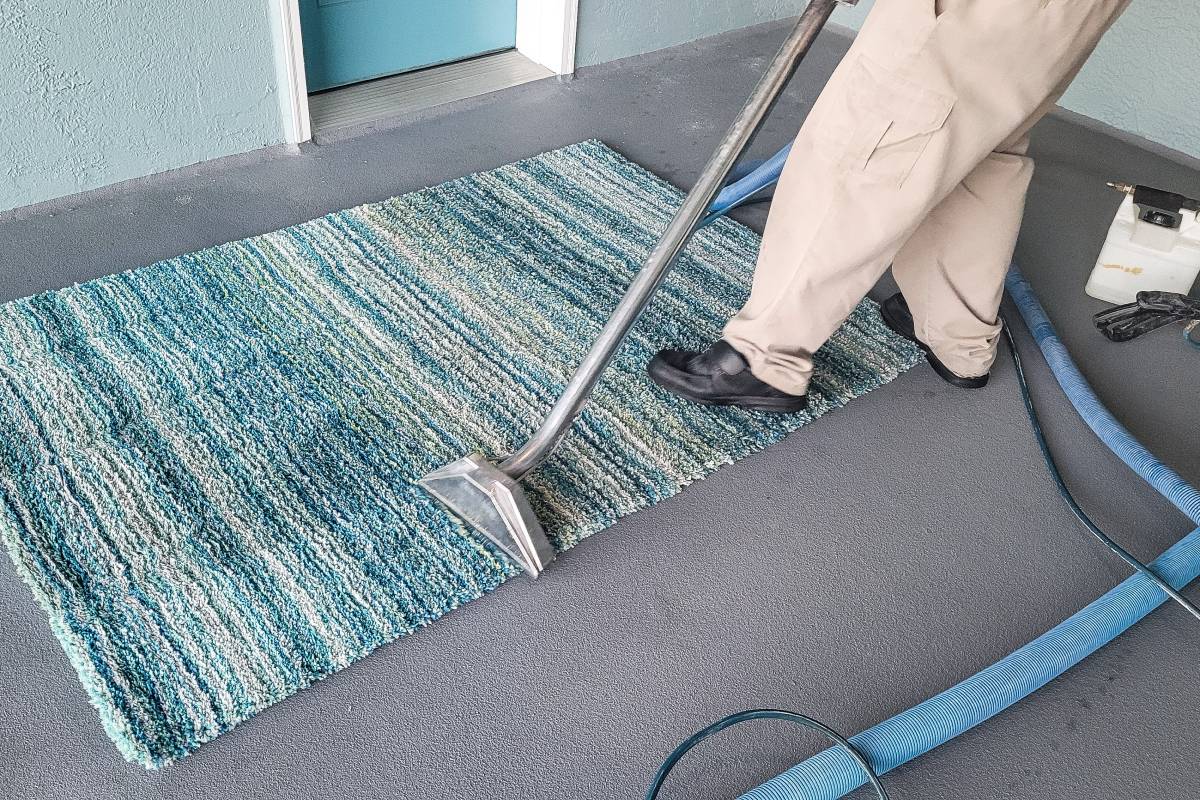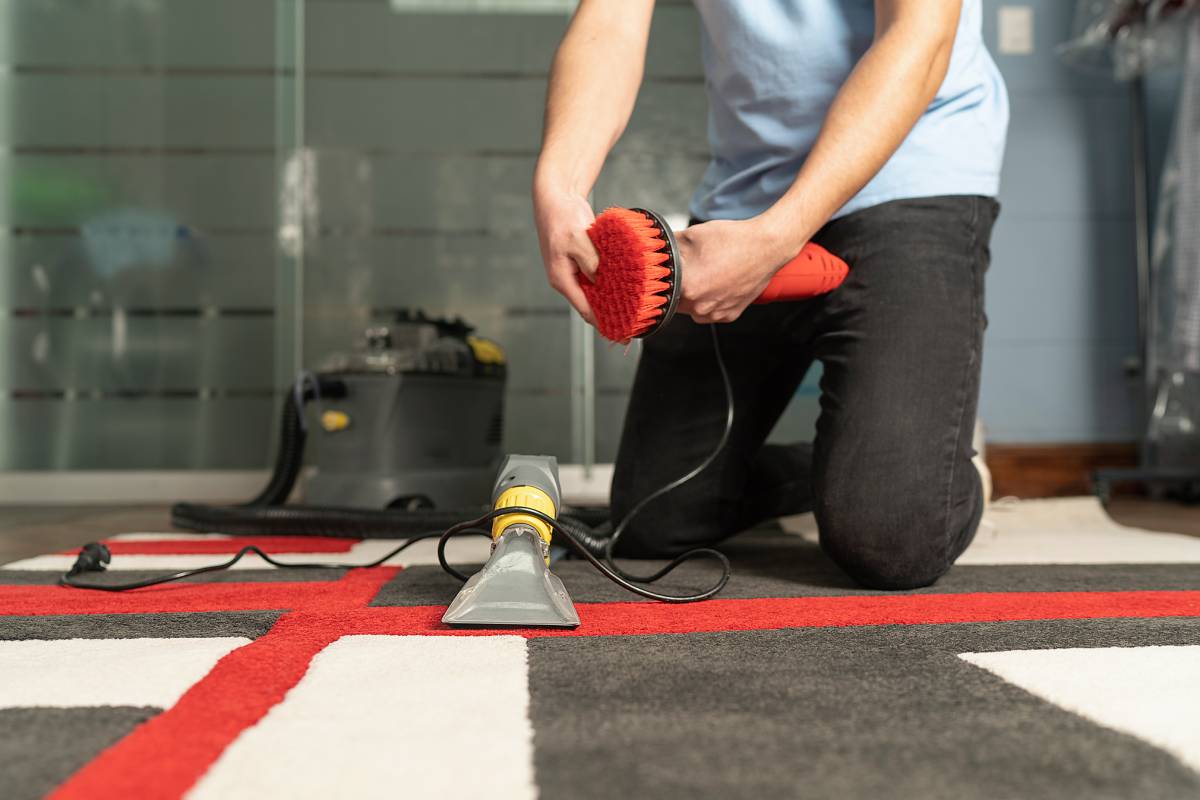Maintaining clean carpets is essential for a fresh and hygienic home. When it comes to deep cleaning however, two popular methods are steam cleaning and shampooing. While both have their merits, understanding the advantages and disadvantages of each can help you make an informed decision as to which is best for you and your home.
In this article, we’re going to dive into the steam clean vs. shampoo debate, look at how often you should do it, discuss DIY carpet cleaning methods (for those who like to get their hands dirty), and highlight the benefits of hiring professional carpet cleaning services instead.
Is it Better to Steam Clean or Shampoo Carpets?
Let’s get straight into it! Which is better: steam cleaning or shampooing your carpets? Whether at home or if you are organising a messy office, you’ll need to think carefully about your options before making any commitments. Here are some factors to consider:
- Steam cleaning and shampooing are both effective methods for deep cleaning carpets, but they differ in their approach and outcomes.
- Steam cleaning, (aka hot water extraction if you want to be all fancy), uses hot water and cleaning agents to break down dirt and stains, which are then extracted using a powerful vacuum.
- Shampooing on the other hand, involves applying a foamy carpet shampoo, agitating it to loosen dirt, and then rinsing or vacuuming it away.
The better method between the two depends on various factors such as your carpet type, the level of soiling, and your personal preferences.

Steam Clean Vs. Shampoo: What are the Advantages and Disadvantages?
If you are still undecided, don’t stress; we’re going to pit both methods against one another and see which comes out on top:
Steam Cleaning:
– Advantages:
- Effective in removing deep-seated dirt, allergens, and bacteria.
- The high-temperature steam kills germs and eliminates odours.
- Requires less drying time compared to shampooing.
- Suitable for most carpet types, including those with stubborn stains or heavy soiling.
– Disadvantages:
- May not be suitable for carpets made of natural fibres that are sensitive to moisture.
- The equipment used for steam cleaning can be costly to purchase or rent.
- Improper technique or excessive moisture can lead to carpet damage or mould growth.
Shampooing:
– Advantages:
- Can effectively remove stains and freshen up carpets.
- Ideal for carpets that are prone to shrinking or colour-bleeding when exposed to moisture.
- Often more affordable than steam cleaning.
- DIY carpet shampooing machines are readily available for home use.
– Disadvantages:
- May leave behind residue if not rinsed thoroughly.
- Longer drying time compared to steam cleaning.
- Less effective in deep cleaning or eliminating allergens.
- Not ideal for heavily soiled carpets or those with deep-seated stains.

How often should you deep clean your carpets?
Now let’s talk about frequency; how often should you deep clean the carpets in your home?
- The frequency of deep cleaning depends on factors such as foot traffic, whether you have pets or suffer from certain allergies, and the carpet manufacturer’s recommendations.
- As a general guideline, it is advisable to deep clean carpets at least once or twice a year.
- High-traffic areas or homes with pets typically require more frequent deep cleaning.
What is the best way to DIY clean your carpets?
If you would rather clean your own carpets, what’s the best way to DIY the task?
- Regular vacuuming is essential for maintaining clean carpets, but for deep cleaning, DIY methods can be effective.
– For steam cleaning:
- Rent or purchase a steam cleaning machine.
- Follow the manufacturer’s instructions and use a suitable carpet cleaning solution.
- Pre-treat stains and heavily soiled areas before steam cleaning.
– For shampooing:
- Use a carpet shampoo suitable for your carpet type.
- Follow the instructions on the product for mixing and application.
- Use a scrub brush or carpet shampooer to agitate the shampoo into the carpet fibres.
- Rinse thoroughly or vacuum away the shampoo residue.
If that all sounds like a bit too much effort, worry not; there are other alternatives…

Is it worth hiring a professional carpet cleaning service?
If you’d rather not get your hands dirty, it may be preferable to choose a reliable carpet cleaner instead. Professional carpet cleaning services offer several benefits:
- Expertise: Professionals have the knowledge and experience to tackle different carpet types and handle tough stains effectively – perfect if you are struggling with a certain stain that is proving otherwise impossible to lift out.
- Time-saving: Hiring professionals saves you time and effort, especially for larger areas or heavily soiled carpets – ideal for the busy homeowner with more pressing things to focus on.
- Equipment and cleaning agents: Professionals use high-quality equipment and specialised cleaning solutions for optimal results.
- Deep cleaning: Professional services can provide a deeper clean, removing embedded dirt and allergens that may not be easily accessible with DIY methods.
Of course, you must consider the cost and convenience factors when deciding whether to hire professionals or if you’d rather get stuck in and take care of it by yourself.
Conclusion
Let’s have a quick recap of what we’ve learned:
- Deciding between steam cleaning and shampooing depends on your specific needs and circumstances.
- Both methods have their advantages and disadvantages:
- Steam cleaning offers a thorough deep clean and is suitable for most carpet types,
- while shampooing can be more affordable and ideal for carpets prone to moisture damage.
- Remember to consider factors like carpet type and the level of dirt and soiling embedded in the fibres.
- For optimal results, deep clean your carpets at least once or twice a year.
- Consider hiring a professional carpet cleaning service for expert care.
And that about sums it up! Both carpet cleaning methods are great, depending on your unique situation. If you can’t decide between the two, rest assured that your chosen carpet cleaning professionals will be able to advise you accordingly.
